Study Blames Temperature Rise, Army Vehicles, Cement Factories
Courtesy: Daily Greater Kashmir dt. Nov. 9th, 2008 by ARIF SHAFI WANI
Srinagar, Nov 8: One of the largest glaciers of Kashmir Himalayas, Kolhai, has shrunk considerably due to unprecedented increase in temperature and high levels of pollution caused by the emission of green house gases by military vehicles and cement plants, a recent study reveals.A study Glacier recession in Kashmir by Muneer Ahmad, an environmental expert from the National Geophysical Research Institute, Uppal, Hyderabad, says the Kolhai glacier has been shrinking since 19th century, but in the last decade it has been receding quite fast. The spatial extent of the Glacier has changed from 19.34 square kilometers to 17.23 square kilometers in 2001 in the past decade. The rate of retreat in 2007 was 21.88 meters in the main snout, the study says.Several small glaciers have disappeared completely in some areas, the thickness of glaciers has reduced by more than two-thirds, and most of the springs in the Valley have dried up, and the remaining are drying up, the study says.Glaciers are important source of fresh water in the Valley, and any change in the temperature or winter precipitation in the form of snowfall influences the flow in the hydrological system of the Valley.“The quantity of snowfall has been clearly reduced over the last few decades. Cement making plants in the Kashmir Valley are producing heat-trapping gases that could lead to no snow in the plains in the next two decades,” the study says.The study further reveals that more than 300 military convoys producing high-level green house gases move across the Valley everyday. “The gases emitted by these vehicles disturb the atmosphere of the Valley. The annual Amaranth Yatra is proving disastrous to the fragile environment of the area,” it states.The 1992 United Nations Conference on Environment in Rio recognized that fluctuation in the size of glaciers is an important indictor of climatic change.The study states that receding of the glaciers has increased the amount of sediments in Lidder catchment in Pahalgam. Lidder Valley forms base of the two main ice fields, the Kolahoi and Shesram. And it is the source of two main upper streams, the West and East Lidder that join near Pahalgam.The study underscores the need for a detailed data on the sediments from glaciated zone. It states that qualitative and quantitative data of water from glaciers and snowfall go a long way in planning, estimating, and forecasting the power generation of glaciated river basin well in advance.
Sunday, November 9, 2008
Subscribe to:
Post Comments (Atom)














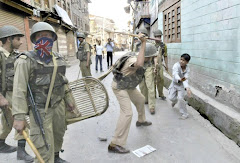





















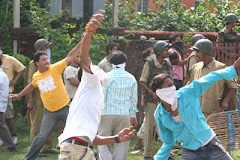

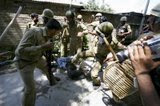




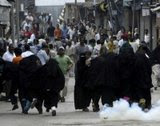







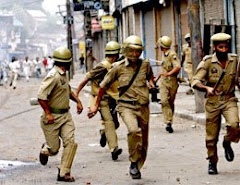
MELTING GLACIERS
ReplyDeleteEditorial Greater Kashmir dt Nov. 13th, 2008
According to a study conducted by the United Nations Environment Programme (UNEP), the World’s Glaciers are melting at a very high rate. Data from close to 30 reference glaciers in nine mountain ranges indicate that between the years 2004-2005 and 2005-2006 the average rate of melting and thinning more than doubled. The findings come from the World Glacier Monitoring Service (WGMS), a centre based at the University of Zurich in Switzerland which is supported by UNEP. It has been tracking the fate of glaciers for over a century. Continuous data series of annual mass balance, expressed as thickness change, are available for 30 reference glaciers since 1980. The WGMS findings also contain figures from around 100 glaciers, of which 30 form the core assessment, found in Antarctica, Asia, Europe, North America, Latin America and the Pacific. Europe’s largest glacier Watna Yoko in Iceland is melting at an alarming rate, almost 1 meter per year. The Icelandic Committee for Climatic Change has reported that all the glaciers in Iceland may disappear within next 100 years. The melting of glaciers may give temporary benefits to the population like increased water for irrigation and hydro-electric power generation. However, in the long run these areas may turn barren and the sea level may rise more than 7 meters which would be disastrous for all low lying countries especially Island Countries. Himalayan glaciers are receding in a similar way as glaciers in other mountain ranges at low latitudes. Many glaciers in these areas could, at current rates of global warming, disappear within the coming decades. Half a billion people in the Himalaya-Hindu-Kush region and a quarter billion downstream who rely on glacial melt waters could be seriously affected. The current trends in glacial melt suggest that the Ganga, Indus, Brahmaputra and other rivers that criss-cross the northern Indian plain may become seasonal rivers in the near future as a consequence of climate change with important ramifications for poverty and the economies in the region. The glaciers in Kashmir are also facing a similar threat. There has been a dramatic change in some of the glaciers over last 30 years or so in both Kashmir and Ladakh. These have receded not in meters but in kilometers. The waters in Kashmir have also political connotations as these are being shared between India, Pakistan, and Kashmir. In a number of places “Water Wars” have already started between various claimants. In fact the World Environment Body feels that major wars in future may be on water. We need to wake up to this future possibility and try our best to retard the melting of these precious glaciers. Recently, a team of “The Energy Research Institute of India” (TERI) visited Kashmir to study some of these glaciers. The team led by Professor Iqbal Hassnain which was accompanied by an expert from Iceland concentrated their studies on Kolahoi glacier in Pahalgam area, the largest in the valley. The University of Kashmir is also collaborating in this study. The report of the team is eagerly waited and it would be advisable for the Government to enlarge the scope of the study to include many other glaciers including those in Ladakh and Kishtwar area of Jammu. It is hoped that the team would also include some positive and practical recommendations for slowing down the melting of these glaciers. Kashmir is already facing a number of environmental disasters involving water bodies and depleting forest cover. The accelerated melting of glaciers would be another tragedy in this environmental downslide. Apart from the Government, the common people too need to be made aware of these dangerous trends facing this “Paradise on Earth” which has remained so only in name! They should become the prime movers for the environmental protection if Kashmir has to survive as a livable place. Otherwise as mentioned in one of the stories of famous Urdu story writer Krishan Chander, Kashmiris may be growing dates sometime in distant future!
EXPERTS INSTALL GADGETS TO MEASURE SHRINKAGE
ReplyDeleteKolhai meltdown gets attention
Courtesy Daily Greater Kashmir dt Nov. 16th, 2008 by ARIF SHAFI WANI
Srinagar, Nov 15: A team of glaciologists and environmentalists went to Kolhai glacier some days ago and installed machinery which will measure the rate of shrinkage and other changes in this important source of water.
Based on the findings the team will recommend measures for the preservation of the glacier which has shrunk considerably in the past decade due to deforestation, pollution, and other causes, as reported by Greater Kashmir last week.
The Kolhai glacier in Sonmarg is the one of the largest sources of water in Jhelum.
The team led veteran glaciologist Prof Syed Iqbal Hasnain comprised environmentalists, some of them foreigners.
Prof Hasnain said the indicators of glacier’s recession are several crevasses and cracks it has developed over the years. He blamed increasing temperature caused by extensive deforestation in its adjoining areas, and the increased activity of Gujjars near the glacier.
Prof Hasnan, who is also chairman of Glacier and Climatic Commission, Govt of Sikkim, told Greater Kashmir that for the first time scientific studies are being conducted on the glacier.
The studies will last for five years after which we will recommend measures to bring down the glacier’s recession rate.
“We have installed eights stakes and an automatic weather station powered by a solar panel at the glacier. This will help us to determine the glacier’s recession rate in different seasons,” Prof Hasnain said.
The team has also installed water level measuring devises at Lidder to record the discharge from the Glacier. The recording will be analyzed during the team’s visit in summer next year.
Prof Hasnain said Kolhai Glaciers has been selected for the studies as it is main source of water for the Valley. “Human interference including the Amarnath pilgrimage is one of the reasons for the Glacier’s recession. Gujjars who are putting up in the glacier’s core area are major contributors for the glacier’s meltdown. As an immediate measure, the government should rehabilitate the Gujjars, stop deforestation, and declare the area from Lidderwath to Kolhai as National park,” he said.
However, Prof Hasnain warned that if the glaciers meltdown completely, Kashmir will become a desert.
The International Environmental Organization and the Energy and Resources Institute New Delhi are sponsoring the study in collaboration with Indian Mountaineering Federation (IMF.)
Commander Satyabrata Dam of IMF said the glacier has shrunk considerably in past three decades. “I climbed up to the glacier in 1978. The main Glacier has receded by a few kilometers and split into two branches. The matter of concern is that it is melting at a fast rate even after the onset of winter,” Dam said.
Earlier a study on Kolhai Glacier conducted by remote sensing by the National Geophysical Research Institute, Uppal, Hyderabad, revealed that its spatial extent has changed from 19.34 Km² in 1992 to 17.23 Km² in 2001, a net decrease of 2.11 Km² in 10 years. The rate of retreat in 2007 was 21.88 meters in the main snout. The study blamed more than 300 army convoys and cements factories for the glacier’s shrinkage.
good work,,,but who cares,its the muslims who are suffering,,we sleep over our problems thinking they'll be over once we wake up....we have the money,,but we spend it on luxury(arabs)and not on education.WE NEED TO WAKE UP.....MAY ALLAH BLESS THIS UMMAH WITH REASONING
ReplyDelete